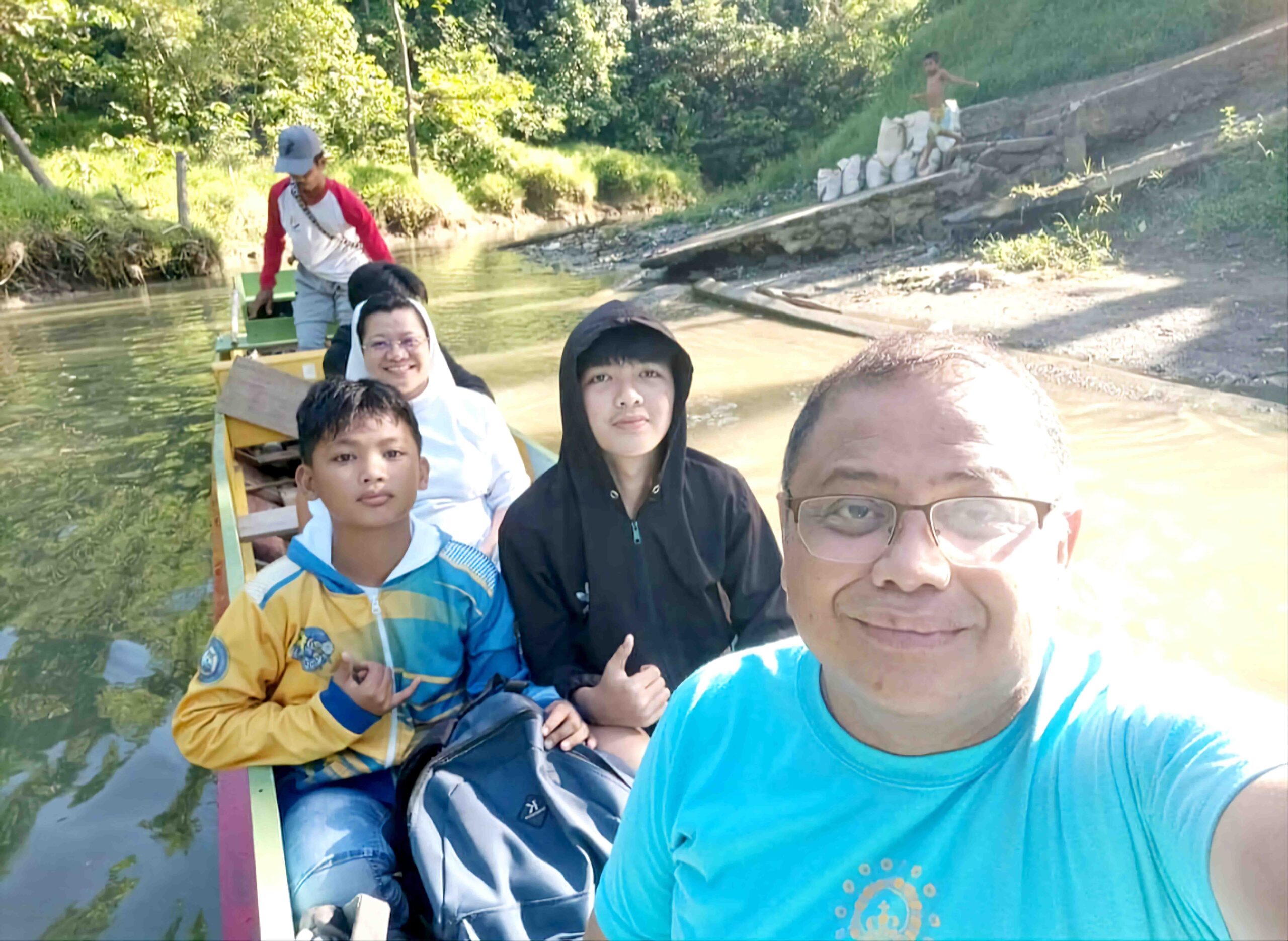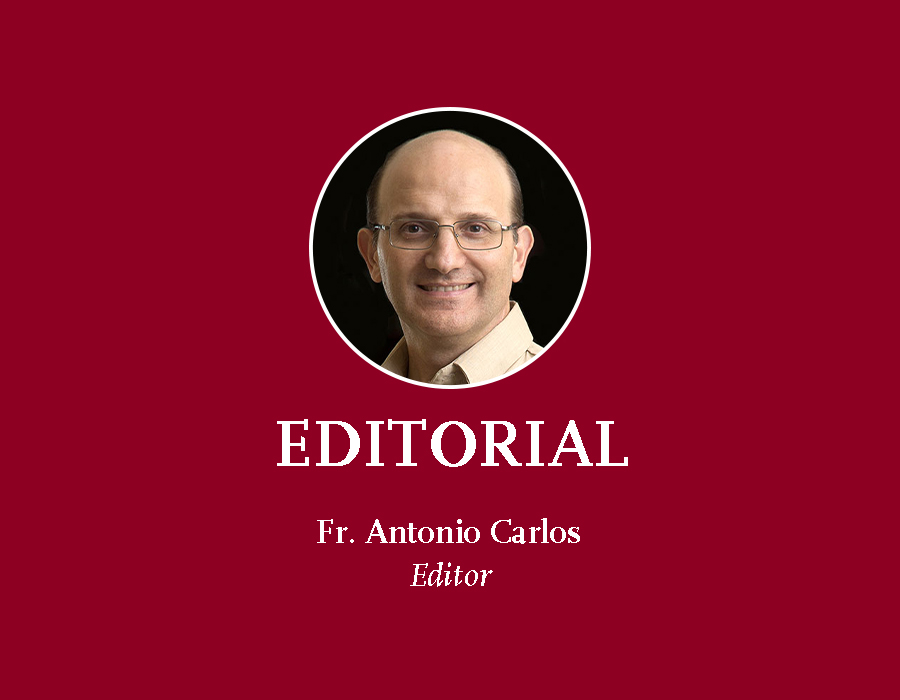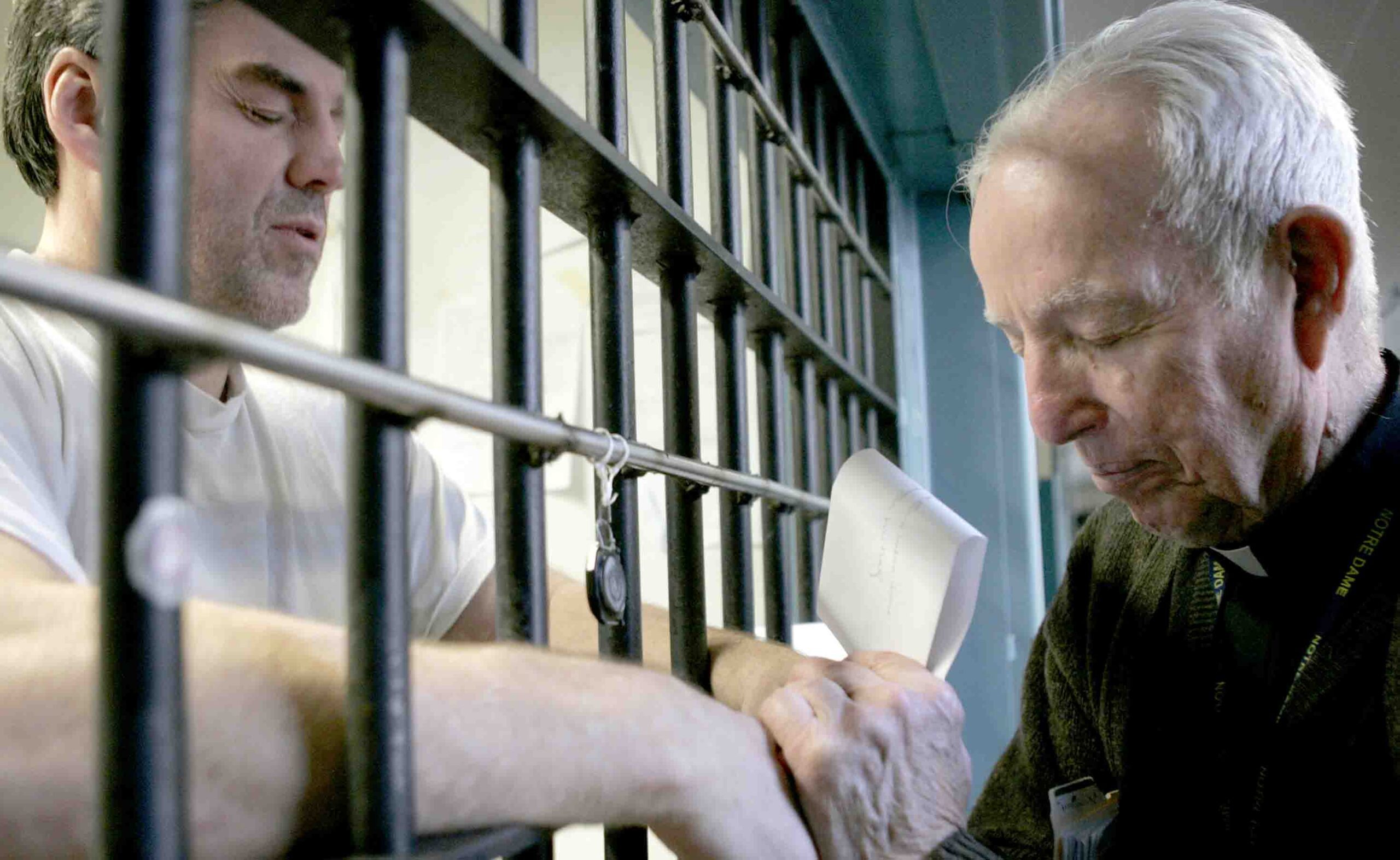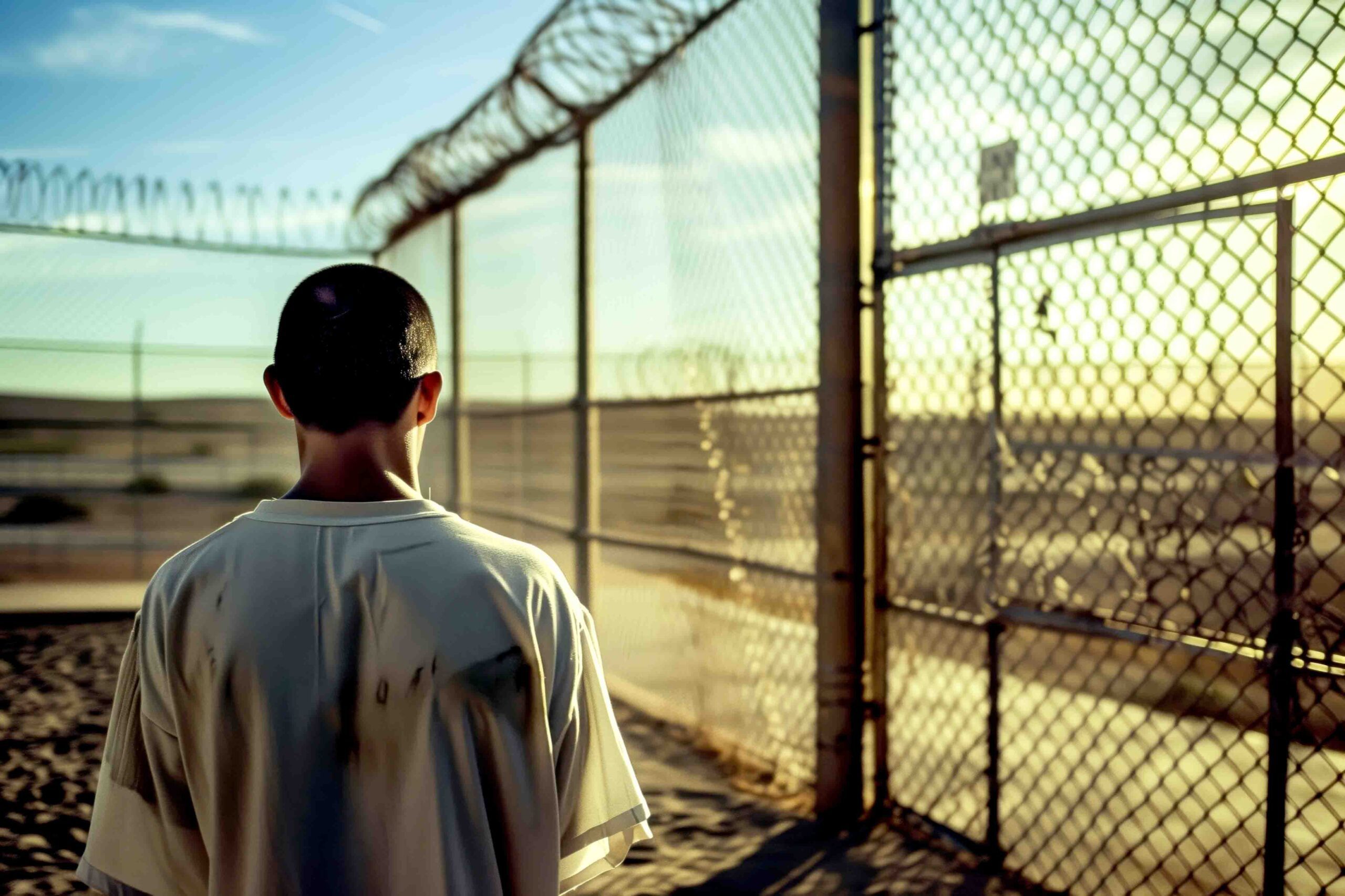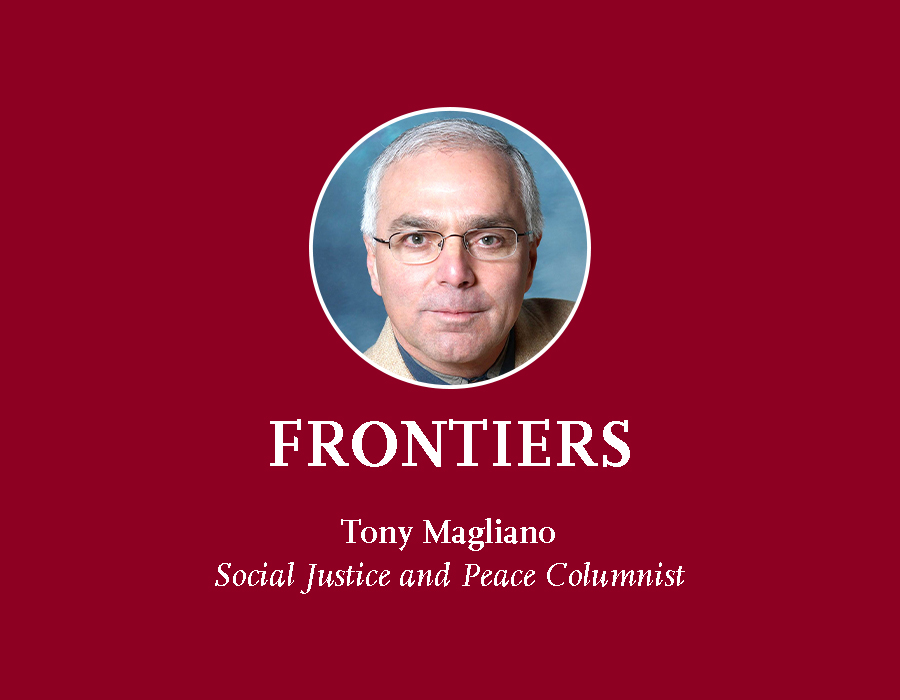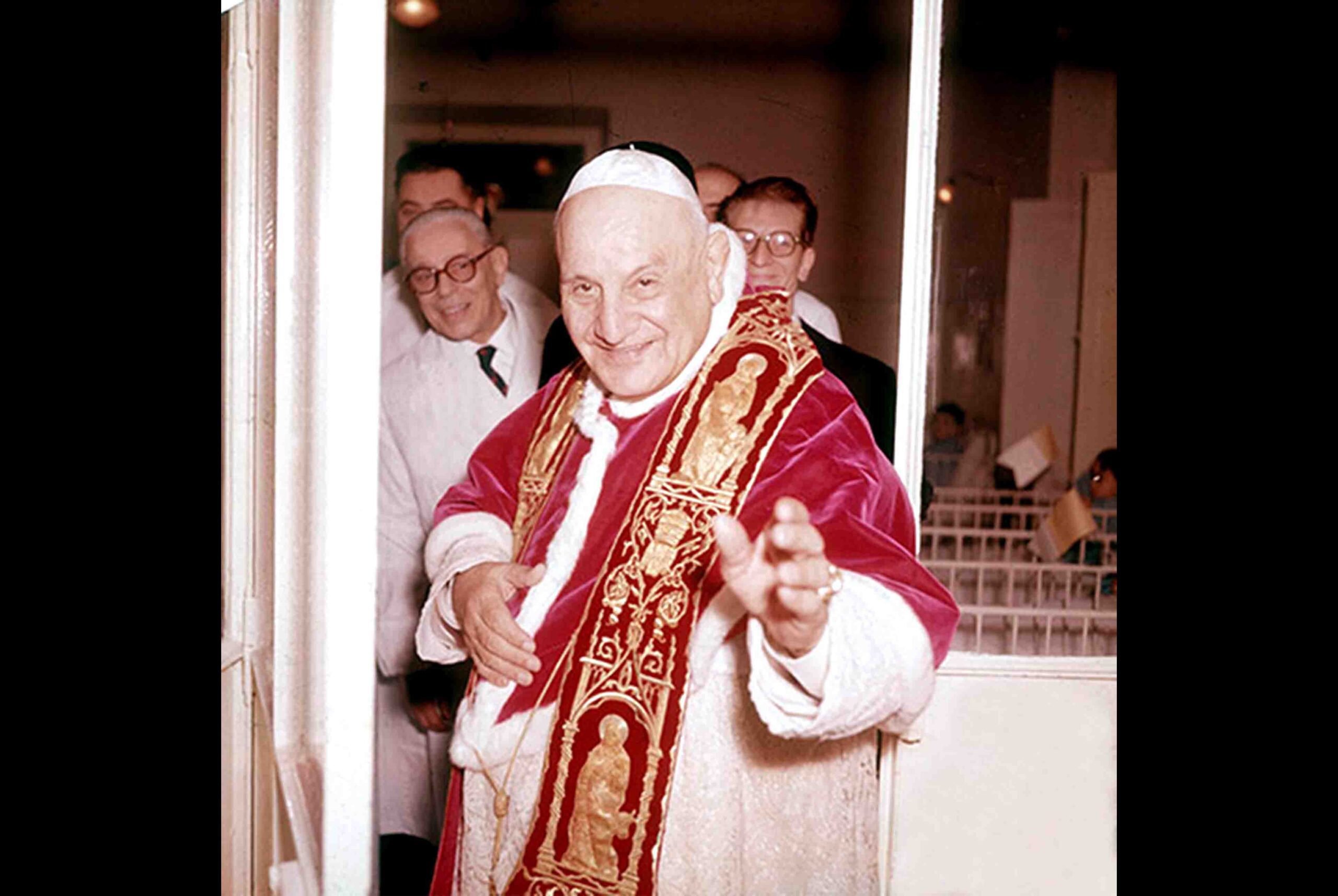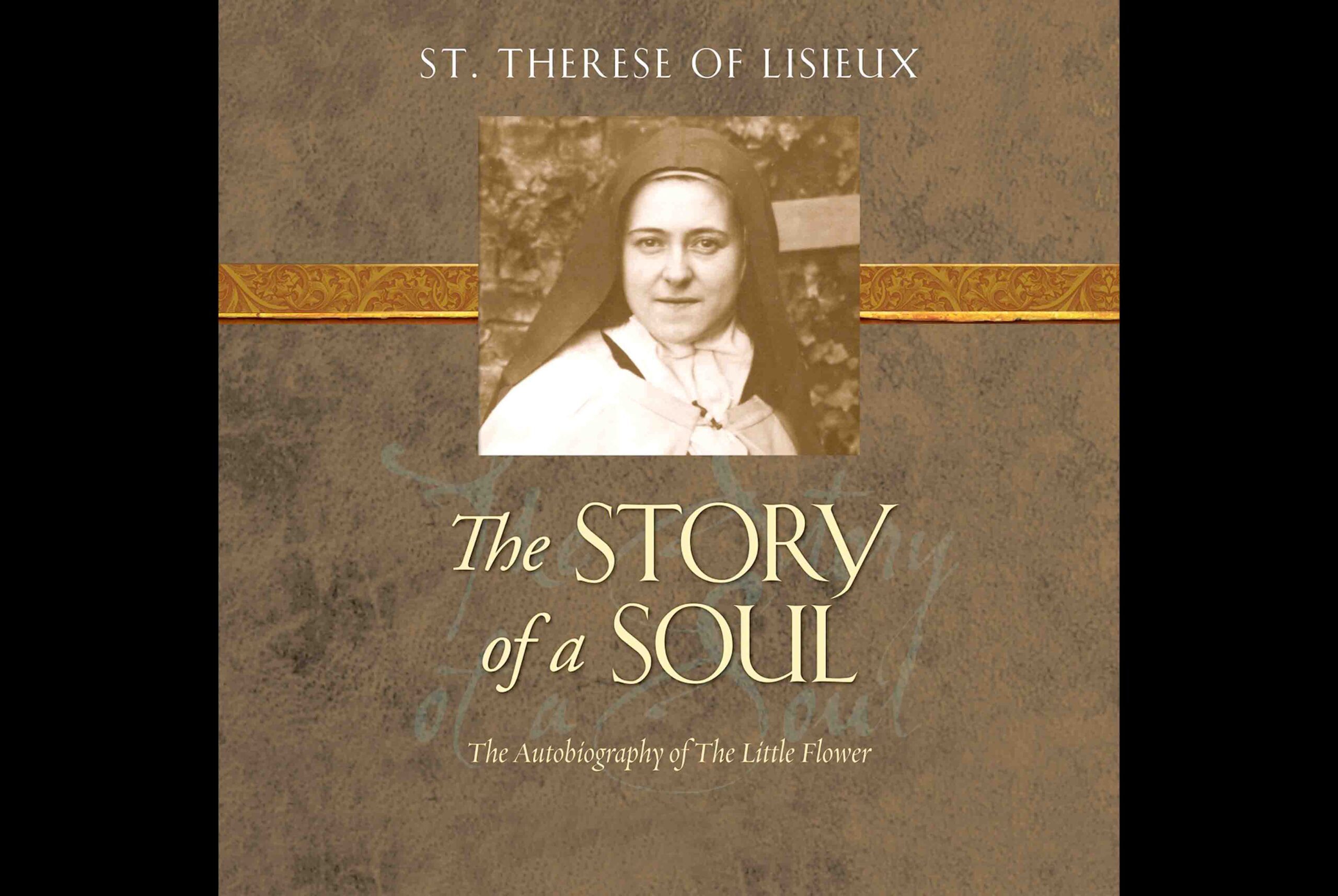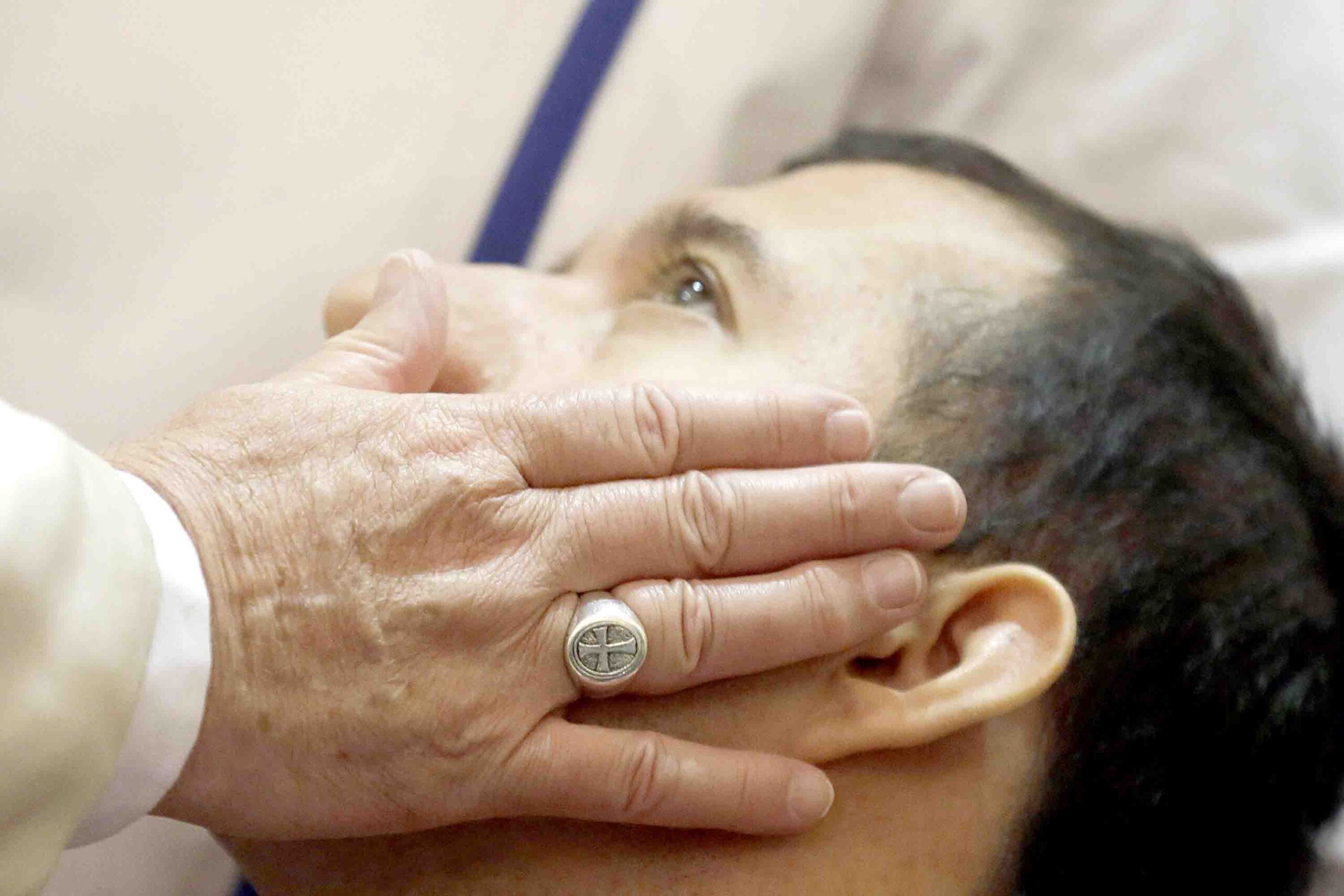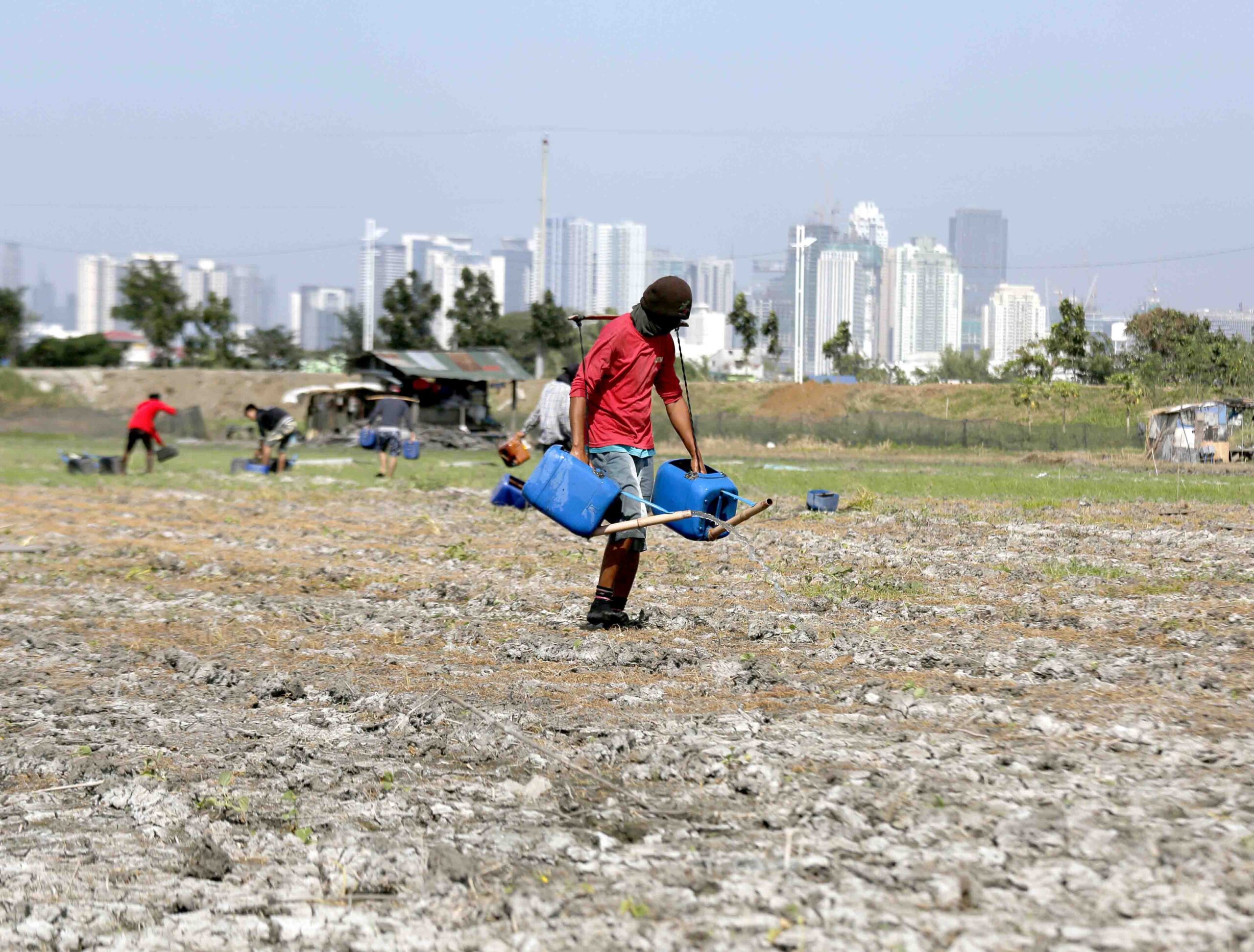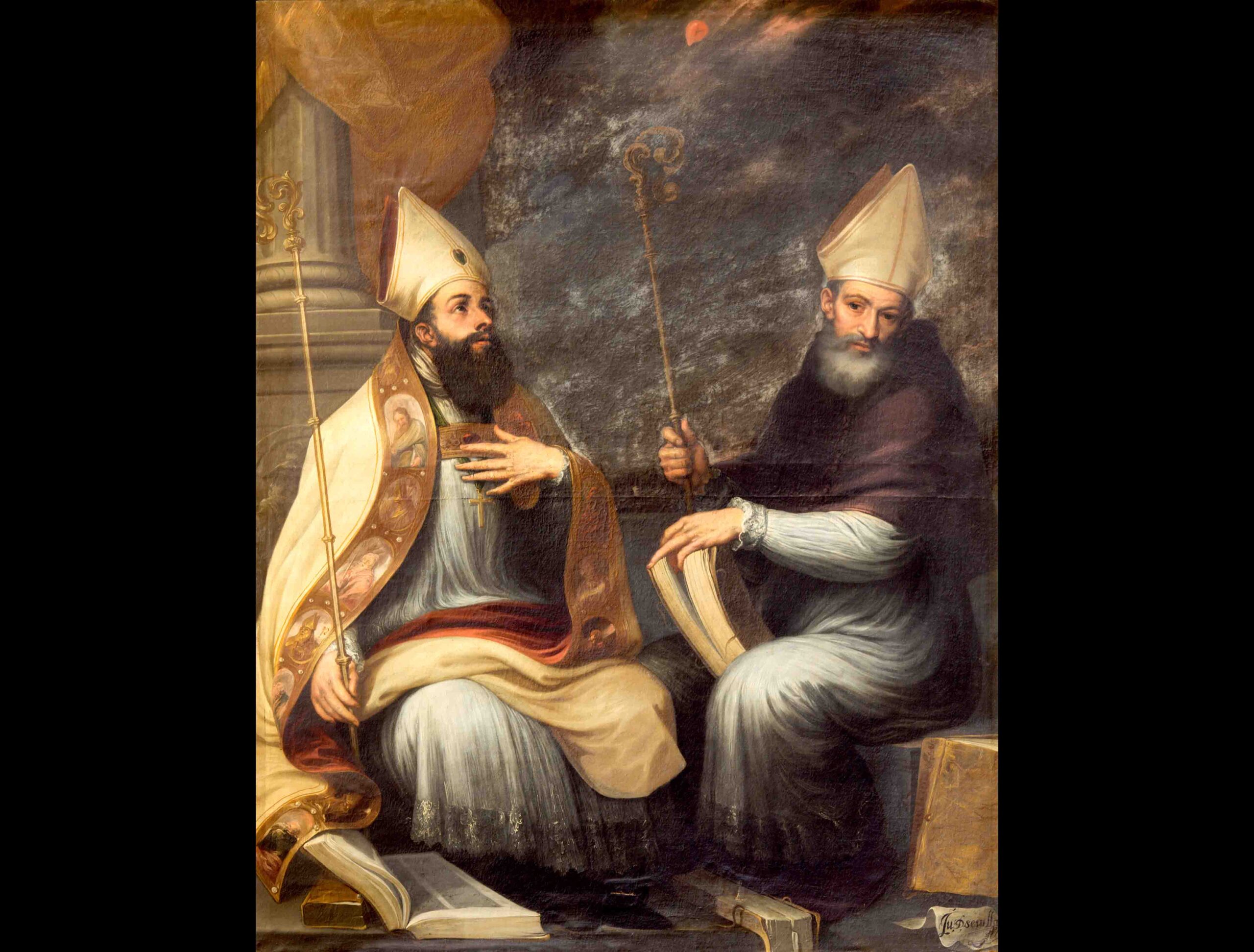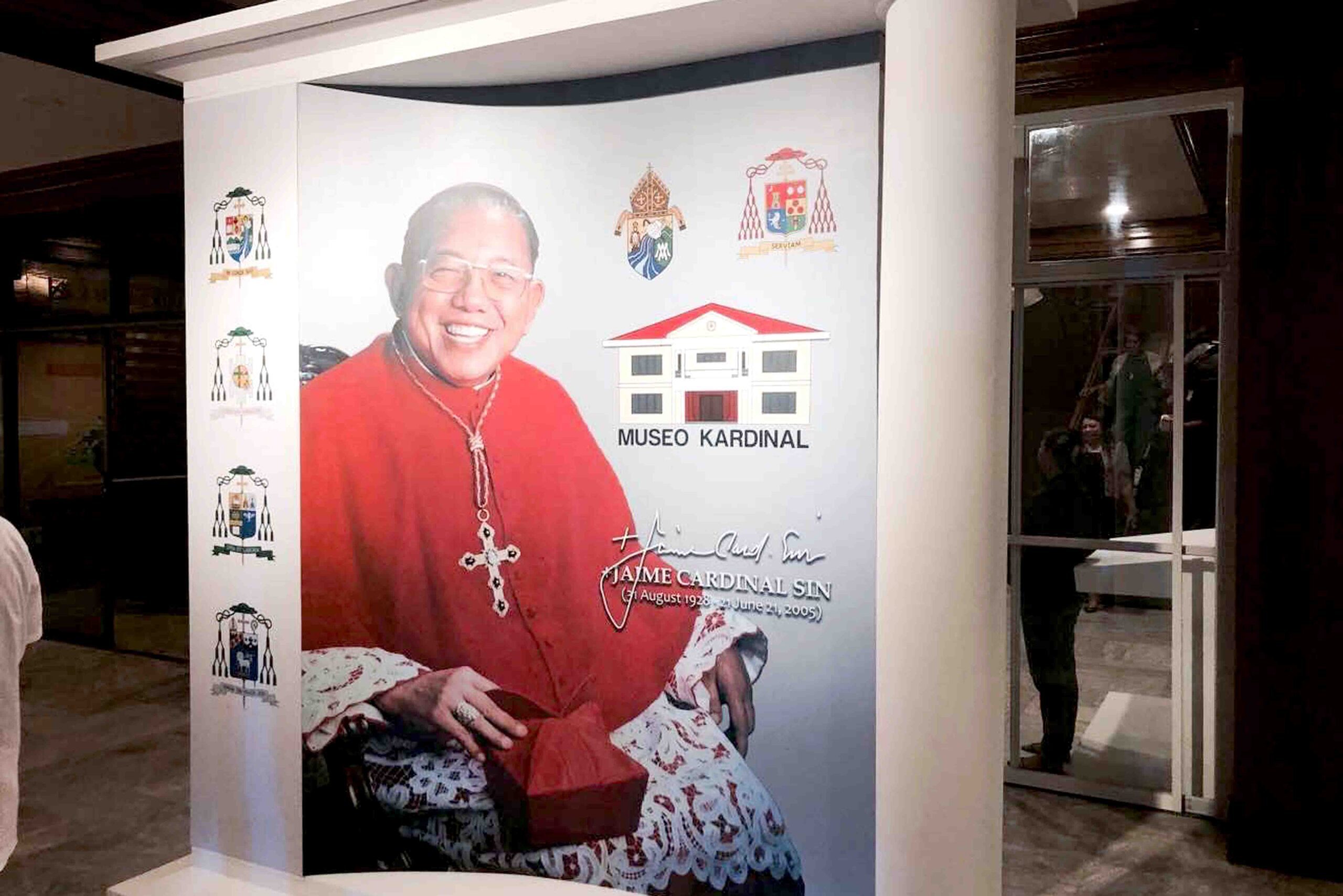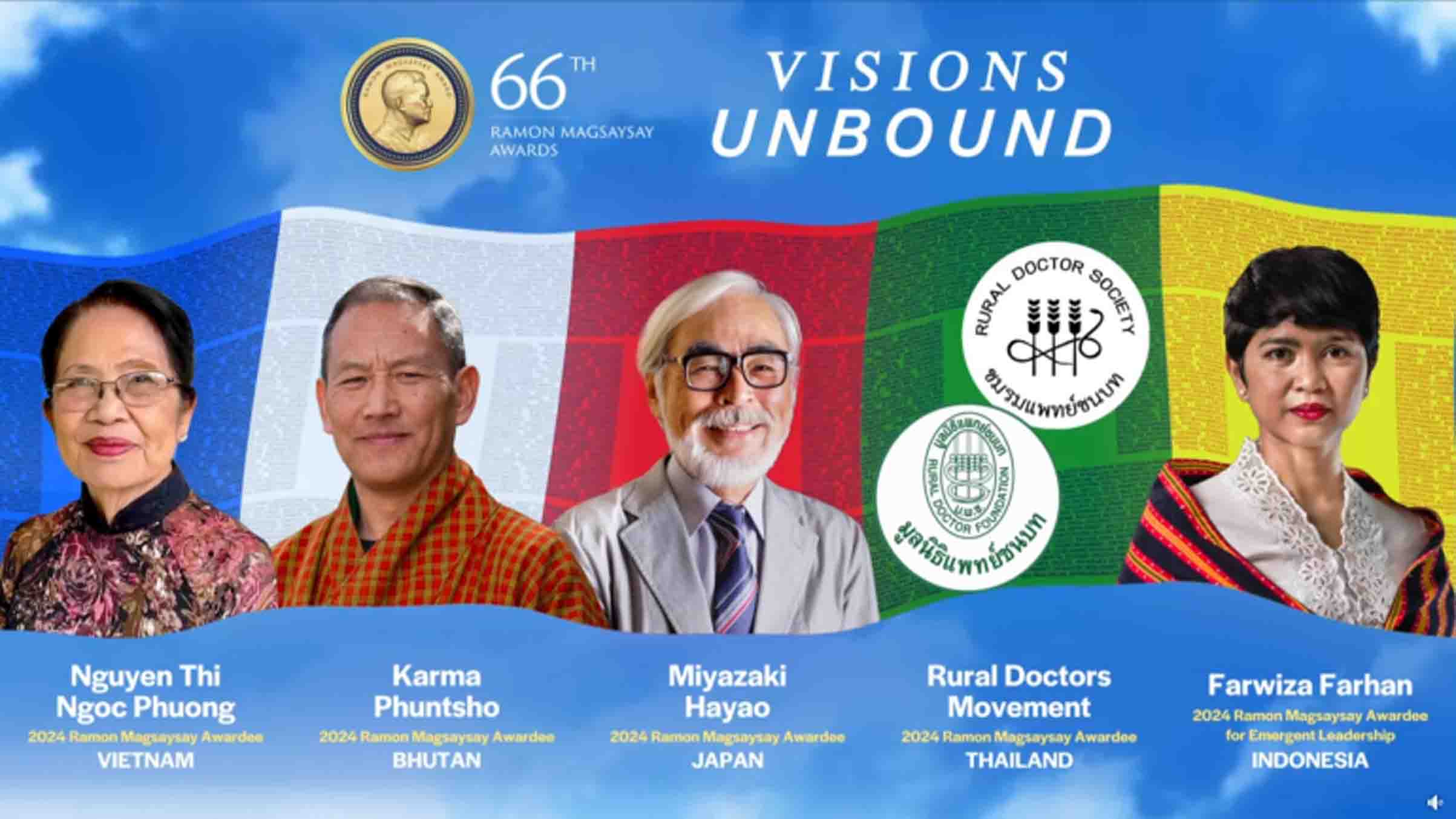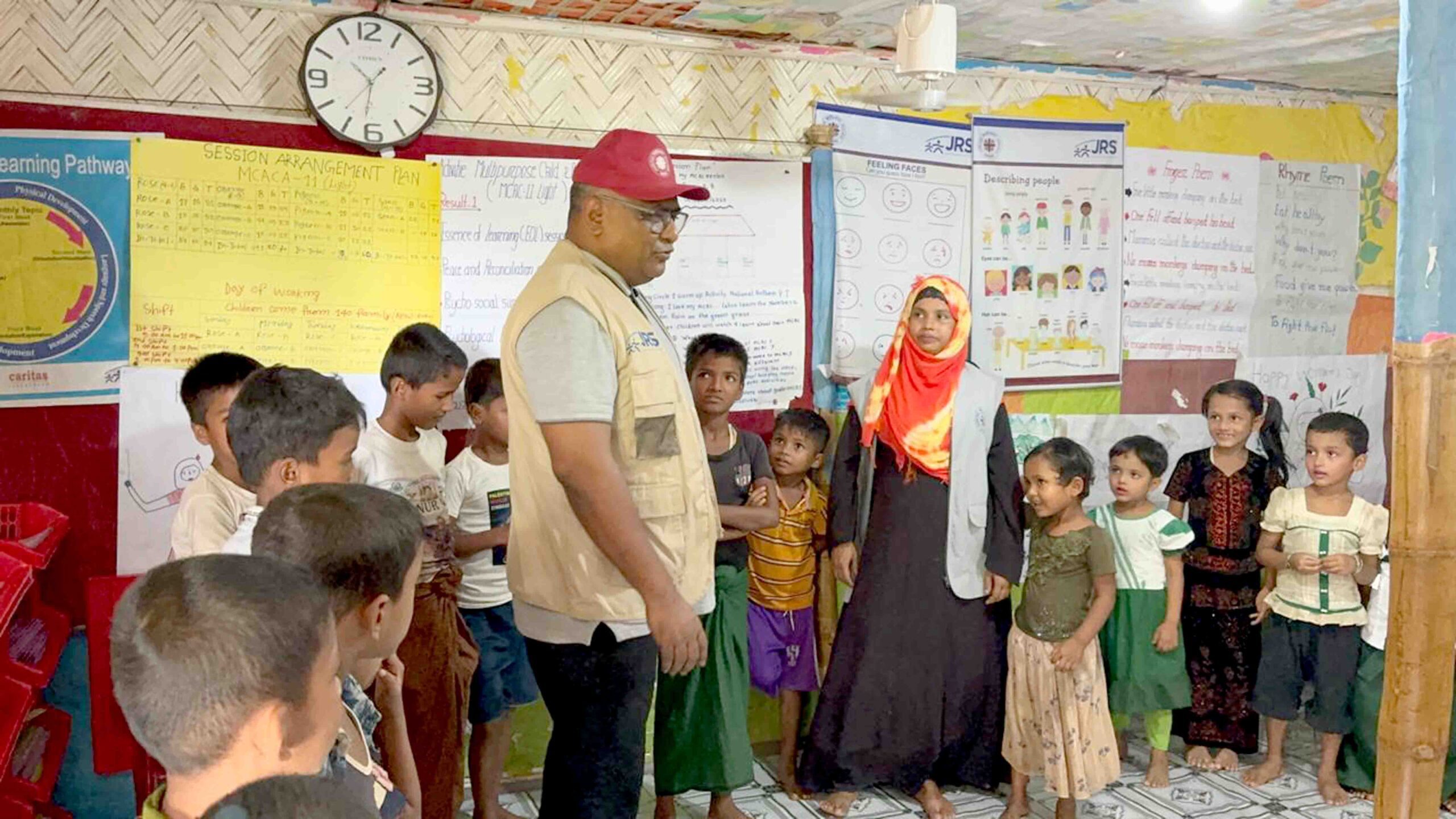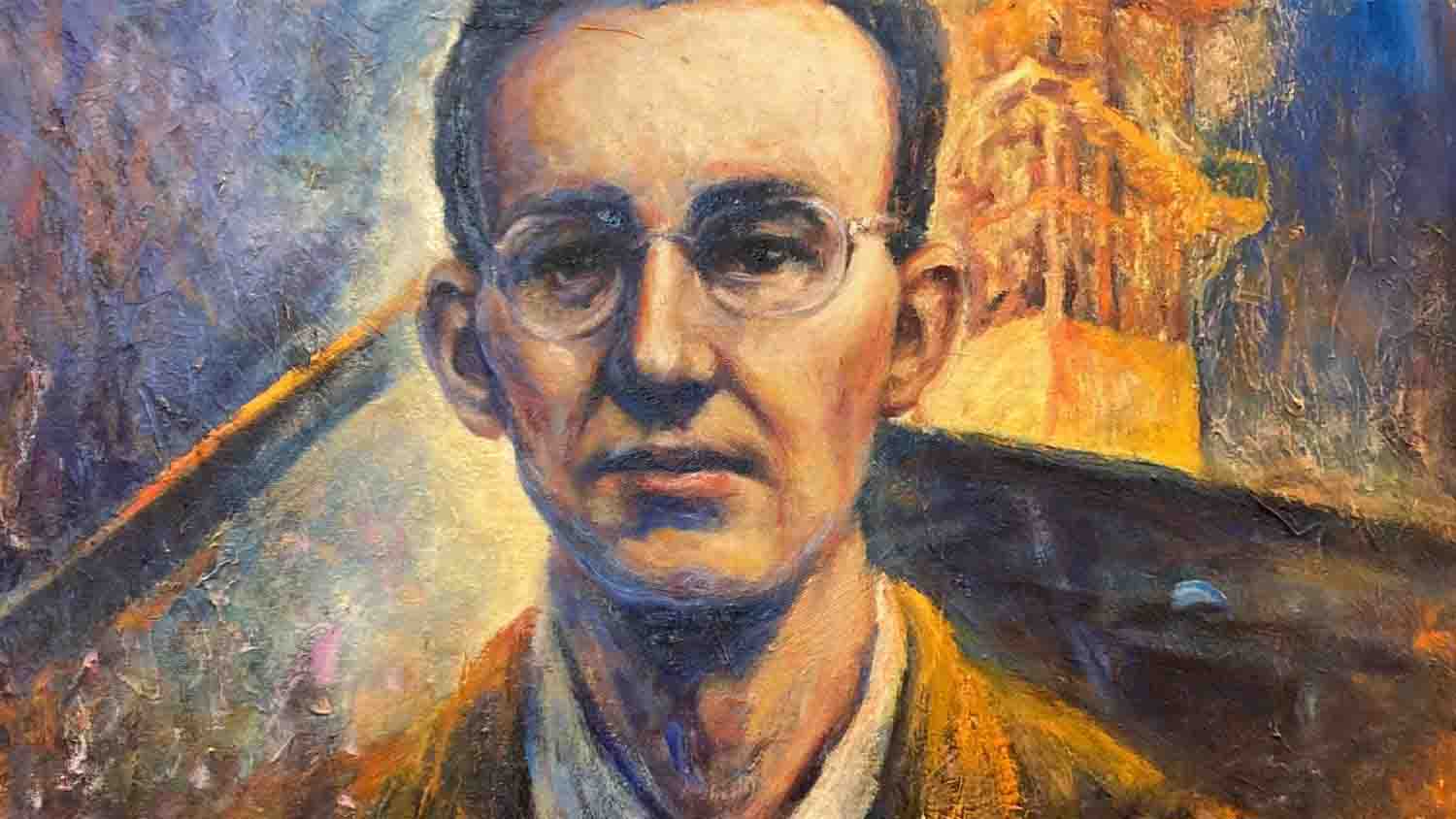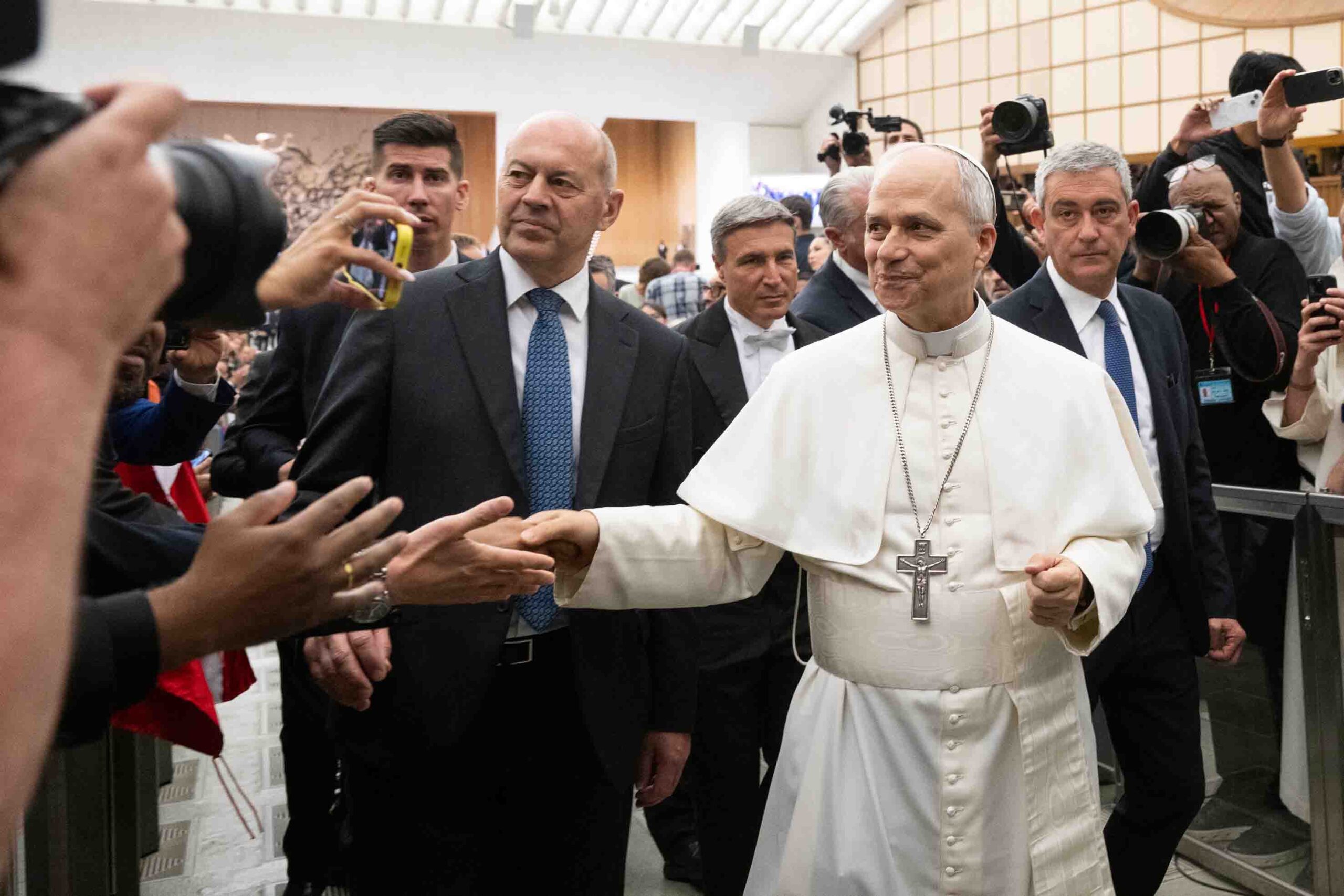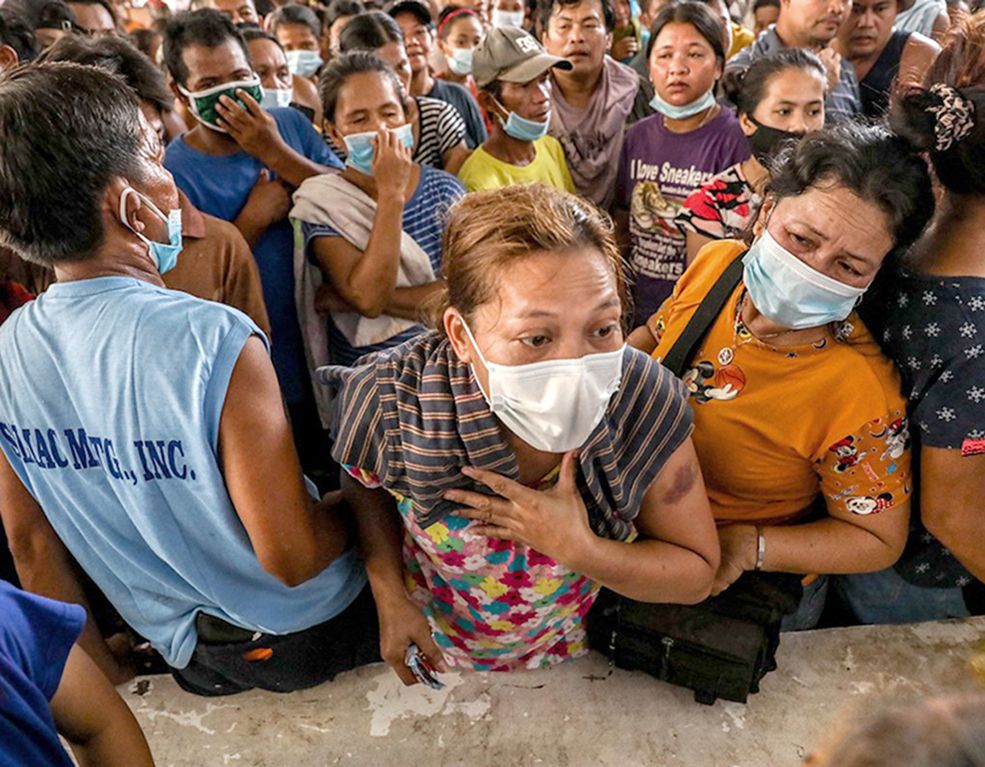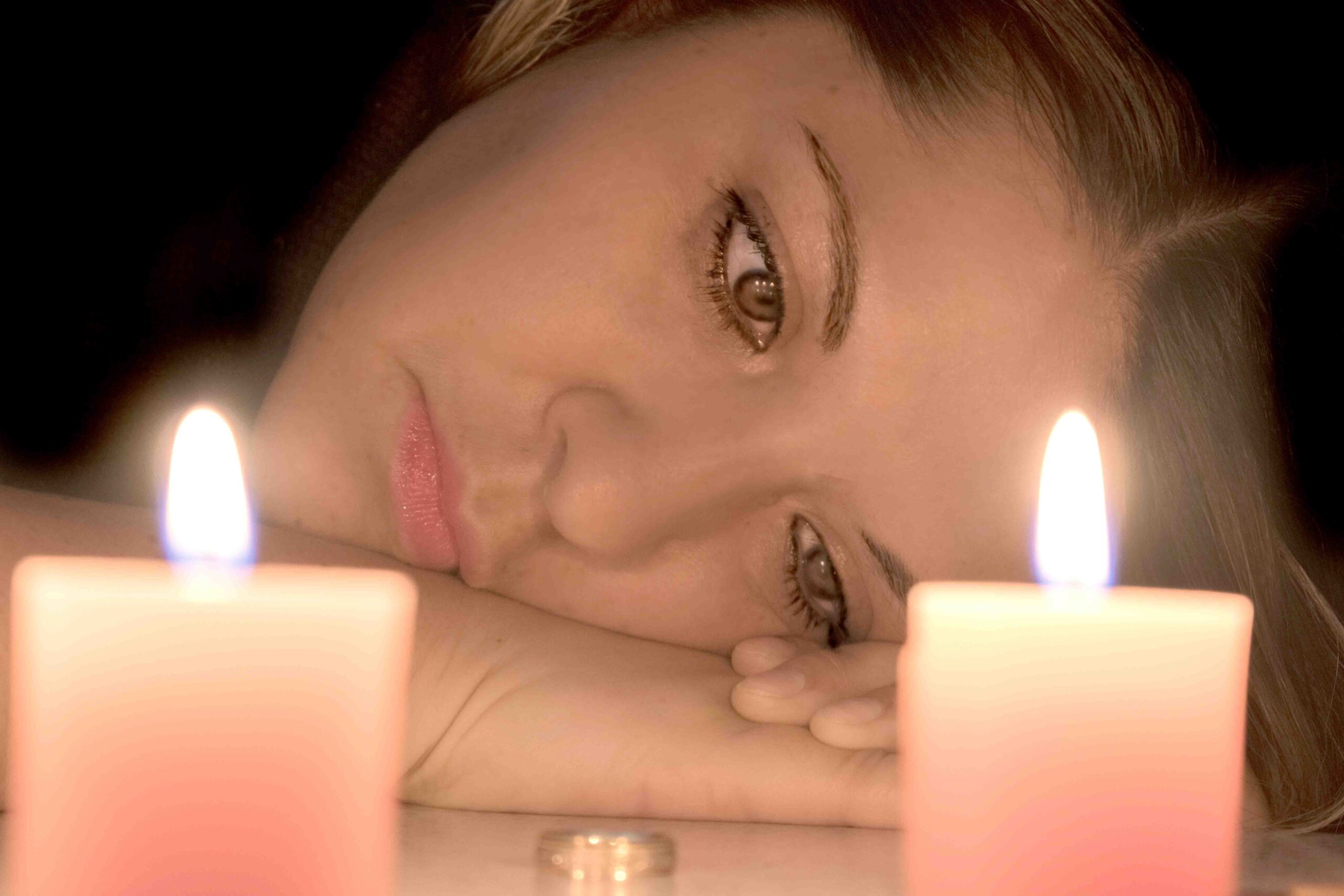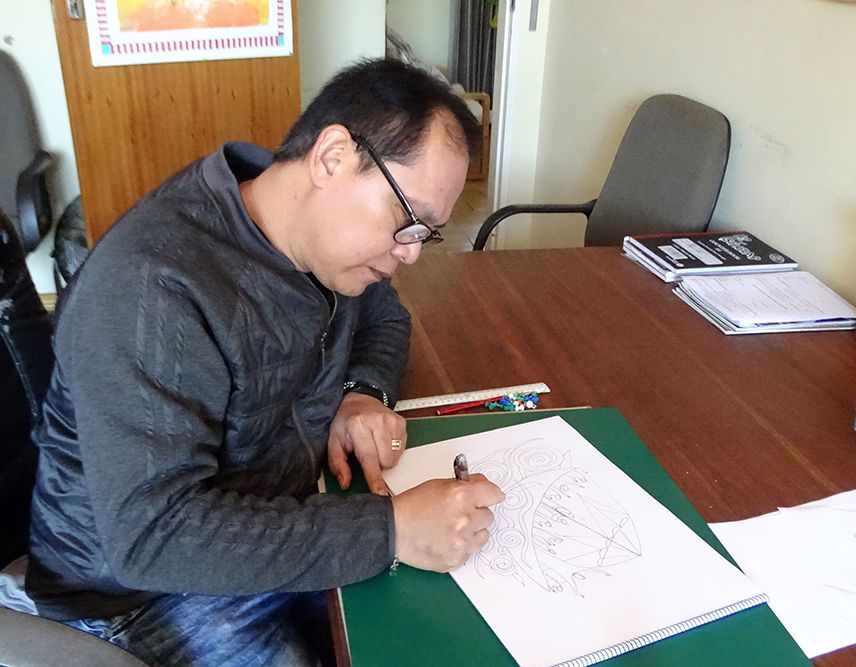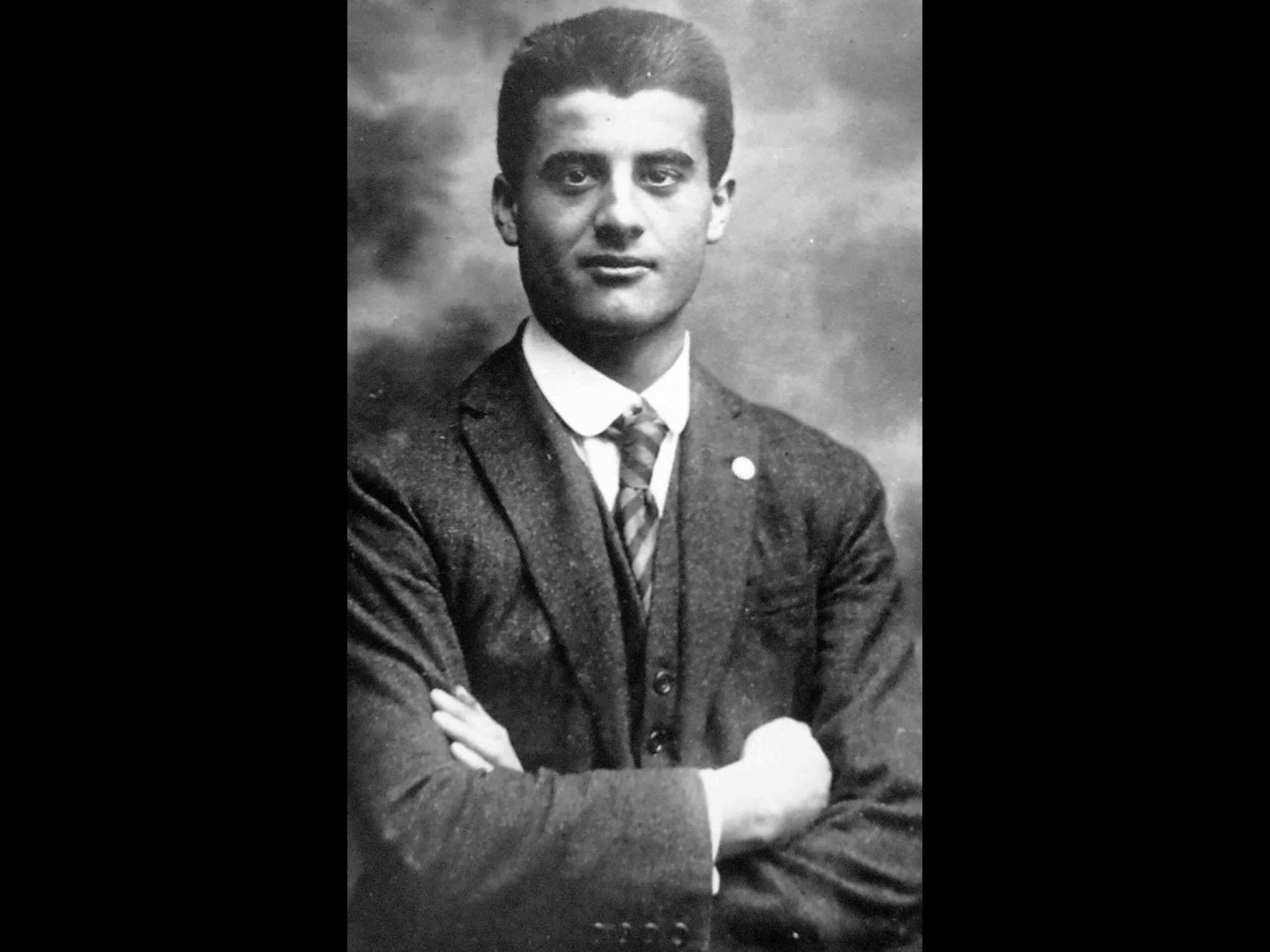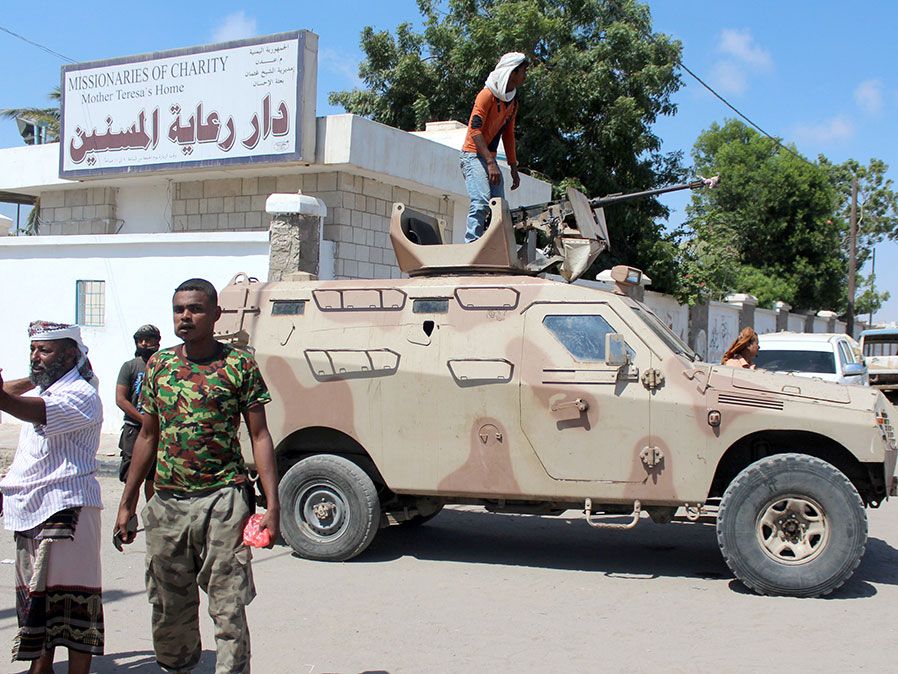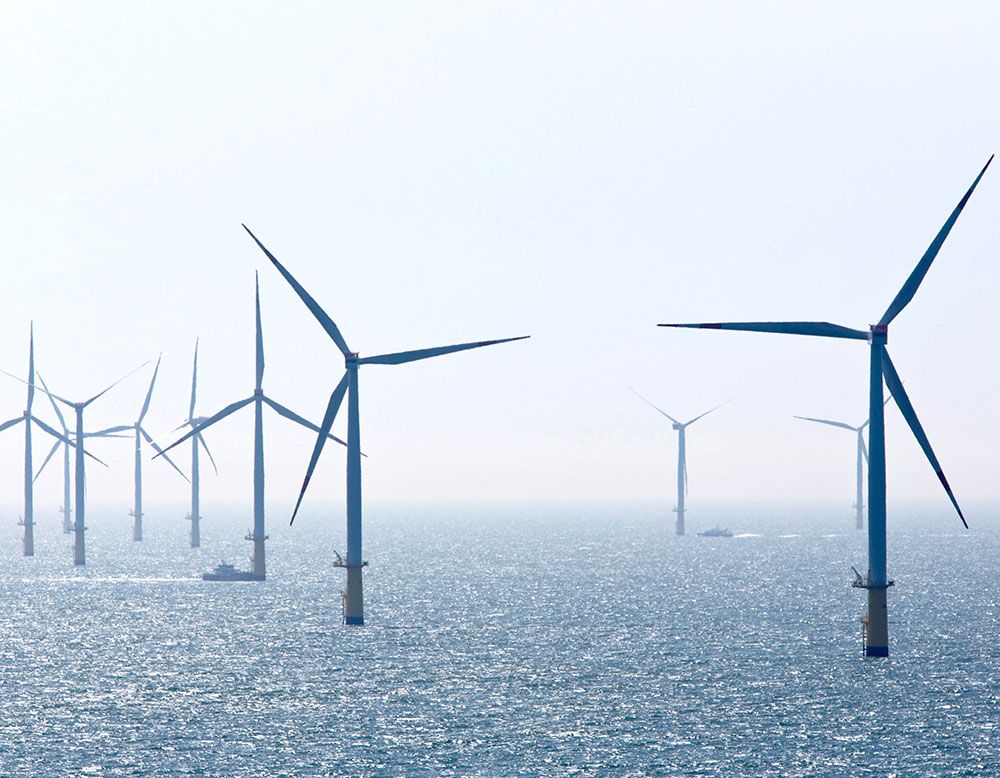Fr. Mateo Labrador Suarez, Fdcc (Figli della Carita Canossiani, Italian, or Canossian Sons of Charity), has to ride a small boat and walk for hours to celebrate Mass in villages inaccessible by land transportation. The engine-driven boat has to have no outriggers as it navigates a narrow river. So, the passengers must be cautious in their movements while in transit to prevent the boat from collapsing to either of the sides.
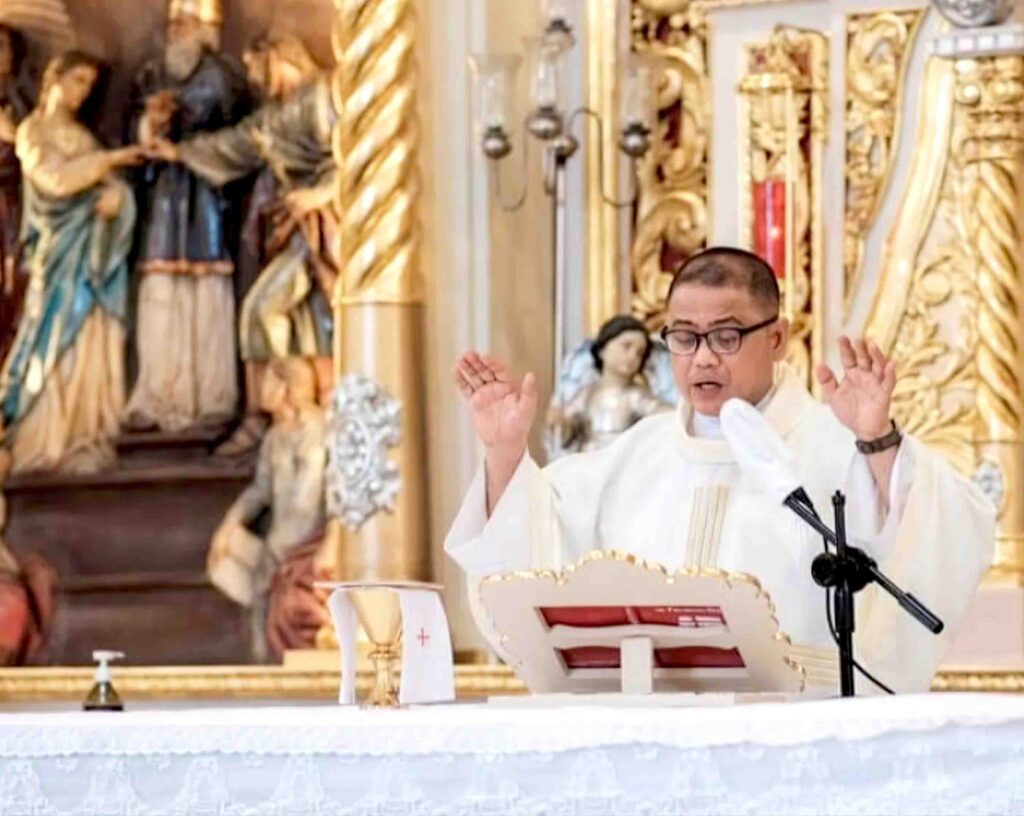

When the boat has outriggers, it is supposed to have a great balance that can stabilize the watercraft from the rocking movements of the passengers as well as the boat itself. On days when the river water is deep, the boat takes about an hour to reach villages in Our Lady of the Most Holy Rosary Parish in Jipapad, a landlocked town in Eastern Samar more than 1,000 kilometers by land and sea southeast of Manila.
But when the water in the river is shallow, the travel time by boat takes about two hours before arriving at the Catholic villages in the Parish. The Cagmanaba and San Roque Chapels are about an hour by boat when the river is deep, said Fr. Suarez, Parish Priest of Our Lady of the Most Holy Rosary in Jipapad. But travel by river takes about two hours when the water is shallow.
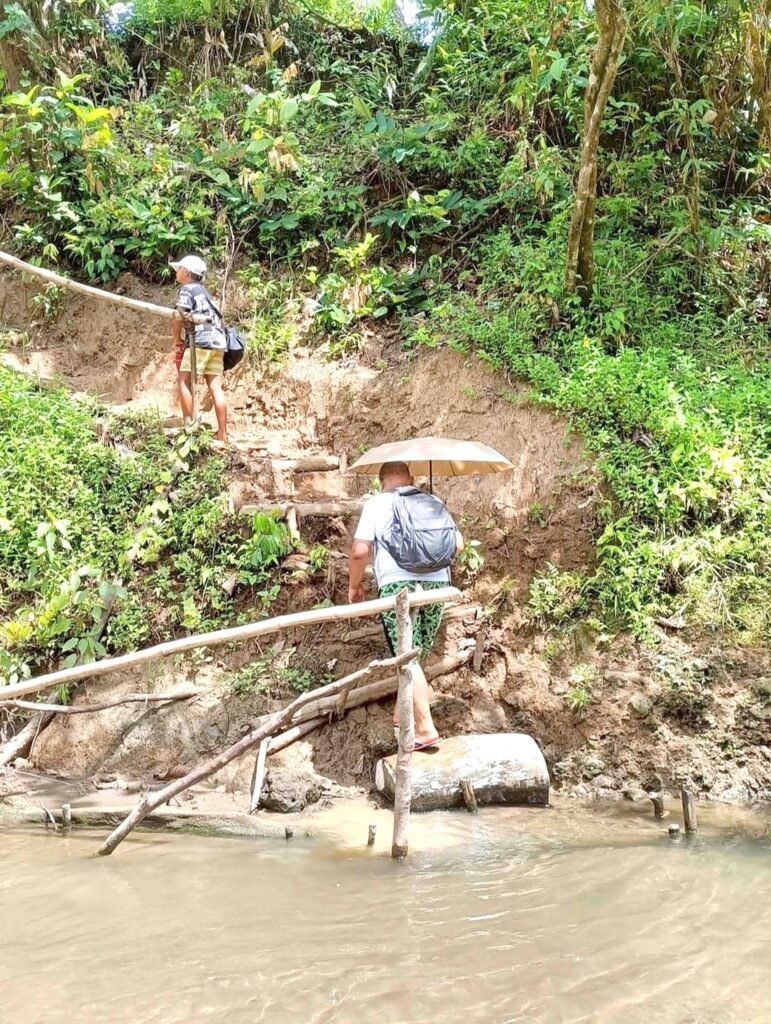

Fortunately, after riding a boat, Fr. Suarez, the altar servers, and extraordinary ministers do not need to walk to Cagmanaba (Nuestra Señora de Salvación Chapel) and San Roque (San Roque Chapel). The boat lands them in both villages.
Due to the town’s inaccessibility, he organized lectors, commentators, and catechists for the Chapels in the villages. So he only takes with him from the town altar servers and extraordinary ministers (laypeople who assist the priest in administering Holy Communion).
They ride a boat to the village of Recare for about 45 minutes. After landing, they walk for another 45 minutes to reach the Chapel in the village. But getting to the village of Dorillo takes about 45 minutes by boat and nearly two hours by foot. They have to pass by the village of Ricare to get to Dorillo, Fr. Suarez said. Dorillo is a mountainous part of the Parish.
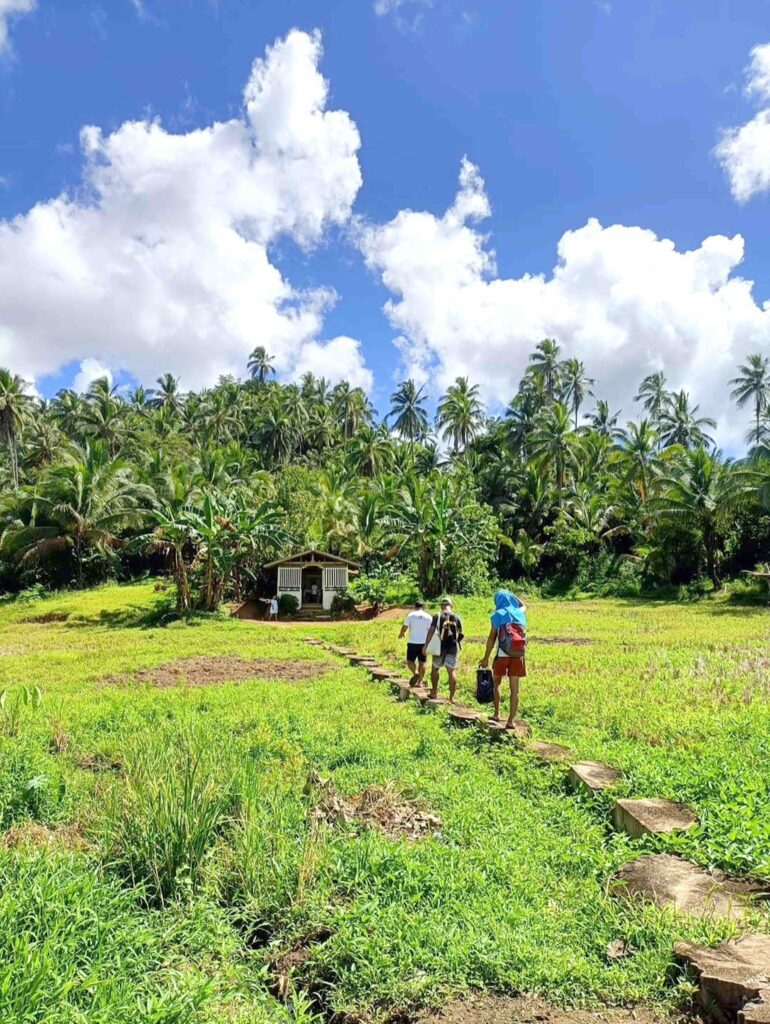

Although the village of Magsaysay is not a mountainous area, going there on a sunny day can be exhausting and dehydrating. The usual route by foot to Magsaysay has fewer trees that are supposed to provide shade and cover against the heat, Fr. Suarez said. Although the roads are generally not mountainous, the noon scorching sun can slow the travel.
Getting to the Chapel in Magsaysay by foot takes about two hours. The village is less than an hour by boat. But the boat cannot move in the river when the water level is down in summer, so people have to walk to get to the village.
CHALLENGES CAN BE A BLESSING
The priest and his team face challenges traveling to barangays Dorillo and Recare during rainy days. The mud is deep, and the paths are slippery. Some of his team members wear boots. But Fr. Suarez finds the boots too heavy when the mud gathers on them, so he walks barefoot.
Getting to Barangay Agsaman, a mountainous village, requires climbing slopes where the body almost touches the ground due to the sharp inclines. But he shared that the rainy days are a blessing when going to the villages of Magsaysay and Agsaman. They do not need to travel on foot and get stuck in mud.
On rainy days, the river water is deep, making it favorable for boat travel to Agsaman and Magsaysay. But on sunny days, when the land is dry, people travel on foot to reach Agsaman and Magsaysay.
Fr. Suarez, with his altar servers and extraordinary ministers, rides a boat to the villages of Recare, Cagmanaba, San Roque, and Sitio Maylimon on sunny and rainy days, as the river’s water level is always favorable for watercraft cruising to said villages.
Fr. Suarez celebrates Mass in different villages in the Parish on Saturdays. But in Barangay Roxas, an anticipated Mass is regularly celebrated in the afternoon of Saturday as the village is accessible by land transportation. Regular Mass is also celebrated in Barangay Mabuhay and Sitio Casapa since these villages are likewise accessible by land transportation. Barangay, or village, is the smallest political government in the Philippines.
The locals refer to their type of boat as boaty. It is built with a roof to protect the passengers from both the rain and the sun. The boat can ferry about ten passengers, but Fr. Suarez and his team are usually five only. “People living near the bank still wash their used clothes in the river,” Fr. Suarez said. “But the water gets dirty as the river approaches the town.”
Some people dispose of garbage in the river. Despite water pollution, the locals still bathe and wash used clothes and kitchenware in the river. Fortunately, some villages near the river enforce measures to mitigate pollution and keep it clean.
GETTING OUT OF THE COMFORT ZONE
Most of the people in the villages are farmers. They grow coconut trees and process the mature nuts into copra. Copra is toasted mature coconut meat pressed to produce oil. After extracting the oil, the coconut meat is used to produce livestock feed. Copra is also used to manufacture soap and cosmetics.
But the coconut farmers cannot set the price of their copra. The coconut farmers have been at the mercy of copra dealers since time immemorial. The local farmers also grow rice, but mostly for their consumption, Fr. Suarez explained.
He expressed concern over his observation that the prevailing mindset surrounding the villages confines the youth in their comfort zones. “The young lack confidence in seeking greener pastures in Manila and abroad,” Fr. Suarez remarked. “Generally, they are already content in getting employed within the town, or in the province.”
He observed that some are working in the town’s local government, others are employed as teachers, and a few are overseas workers. Generally, most local young people hesitate to look for opportunities outside the town and the province, especially those in remote villages.
With no intention to displace people, Fr. Suarez hopes the young will explore opportunities outside their comfort zones and gain the necessary credentials and confidence to achieve them.
Many young people, especially the poor, are content with their lives in the remote villages. “I pray the young will realize the value of education,” Fr. Suarez said. “I hope they break out of their comfort zones and strive to study and finish college. Education will benefit them as individuals and as communities. Their success outside the town can help in the progress of their villages and the town in general when they return home.”
THE CHURCH IS FOR EVERYONE
“Some locals, especially the poor, even view the Church as only for the rich because they have less or nothing to give,” Fr. Suarez observed. “But they need to understand that the Church is for everyone regardless of social status.” Also, the locals view the Church as an organization that provides them food and other needs in times of need, like poverty and calamities. They see themselves as receivers and the Church as the giver.
“They also need to understand that they are part of the Church and have to do their share for the Church,” Fr. Suarez said. “The Church cannot always give them fish. So, they should be fishermen themselves.” The people own the Church, he explained. The poor should also contribute to their Church, even in their small capacity to share, because it belongs to them.
He wants to remind his parishioners, especially the poor, that the Cannosian congregation prioritizes people on the margins of communities. Fr. Suarez also recognizes the poor’s capability to lift themselves from their current status and encourages them to utilize their means for good.
“Everyone, rich or poor, has a gift,” he said. “That gift can be harnessed to help improve oneself, the Church, and others.” Fr. Suarez is in his second year as Parish Priest of Our Lady of the Most Holy Rosary in Jipapad. Before taking the Parish assignment, he taught for eight years in the seminary at St. Magdalene of Canossa Formation House in Quezon City.

